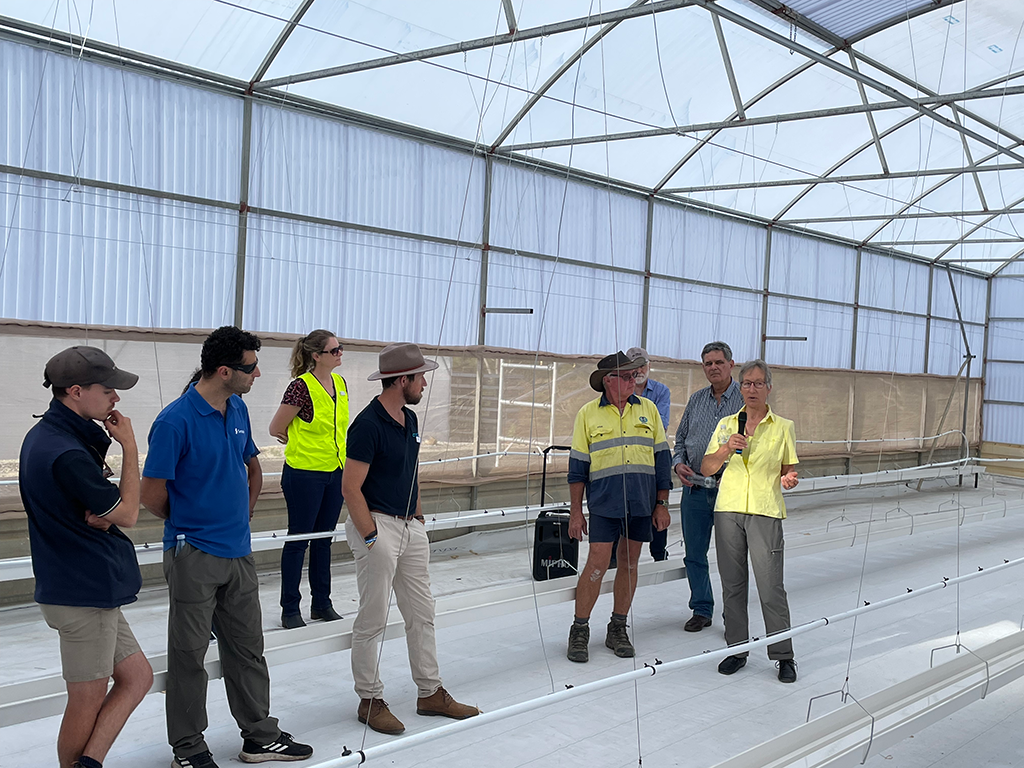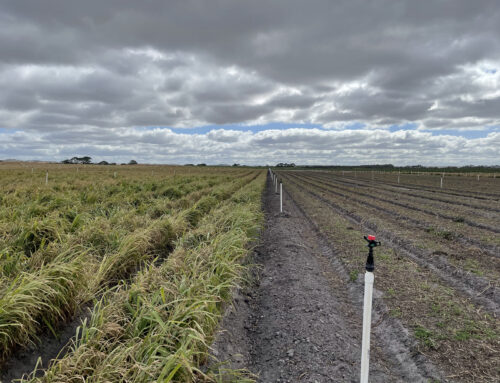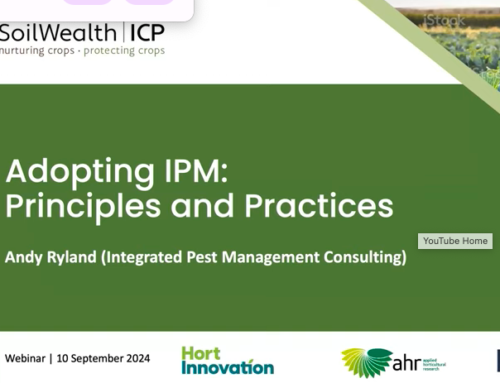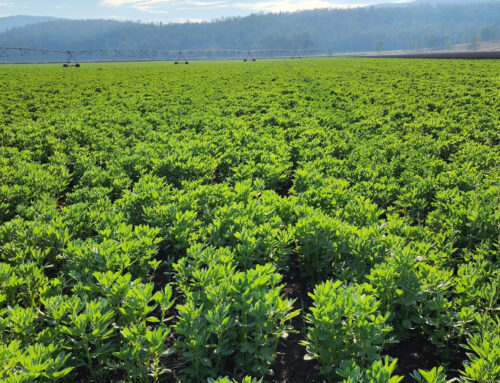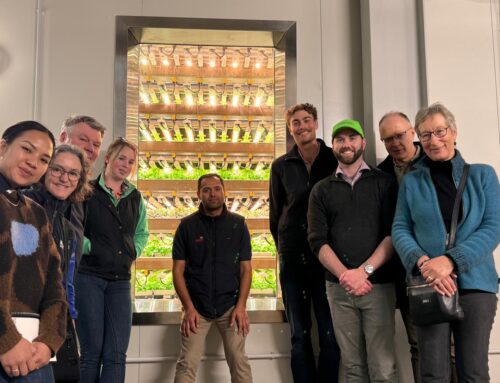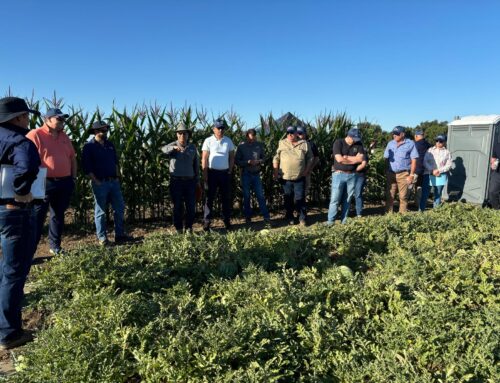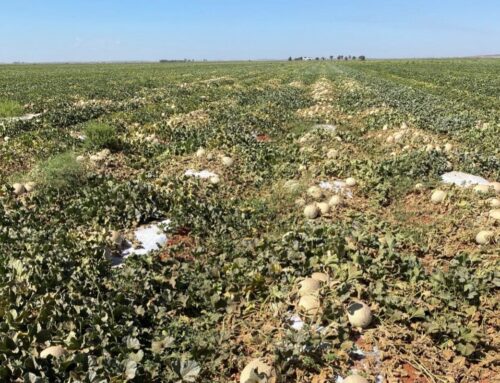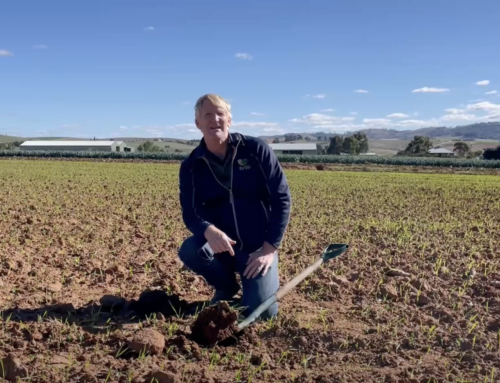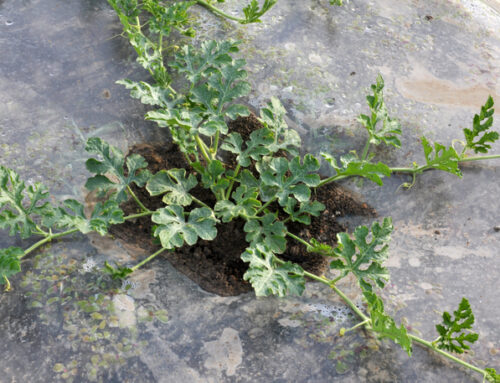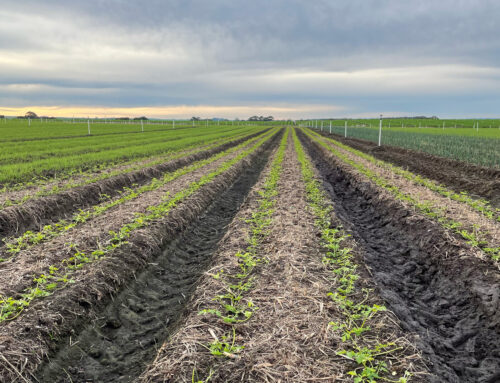Doris Blaesing and Carl Larsen (RMCG) from the Soil Wealth ICP team were in Western Australia last week for several farm visits, events and industry meetings, in addition to scoping a potential new combined vegetable and melon demonstration site.
The team met with several growers, agronomists and ag-tech providers during the visit. We experienced the great adaptability and innovation in production systems ranging from hydroponic protected cropping to open field production.
COVID-19 has driven a surge in investigating and installing monitoring and/or automation options on-farm, ranging from irrigation scheduling, soil moisture monitoring, weather stations, and vision sorting, packing line sensors and robotics. Given the high cost of production, strict quality specifications and flat prices, there is a significant interest in value adding to reduce wasting vegetables that are perfectly good to eat but are in the ‘wrong’ size range or are ‘misshapen’.
Thanks to Katrina Hill, VegNET WA Regional Development Officer from vegetablesWA, for taking the time to meet with the team and connect us with local growers and industry members.
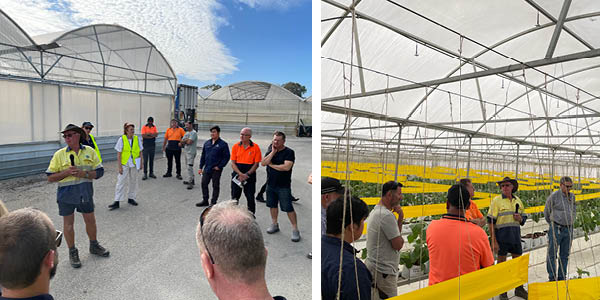
Figure 1: WA farm walk participants hearing from Doug Chamberlain about input use efficiency.
Monitor to manage – WA input use efficiency farm walk recap
On a warm and windy afternoon north of Perth, 48 growers and industry members participated in an input use efficiency farm walk co-hosted by vegetablesWA, and Irrigation Australia Limited.
The farm walk was hosted by Doug Chamberlain and Peter Ruddle from Grown Smart Produce, hydroponic cucumber growers in Carabooda WA. The event included technical presentations on soil health and water and nutrient use efficiency from the Soil Wealth ICP team, as well as from certified irrigation designers on system maintenance, monitoring and management to improve crop productivity.
Also on display was the latest in irrigation and nutrient monitoring ag-tech from Swan Systems, Wildeye, CropX, Toro, HR Products, Sentek and WASP, along with Irrigation Australia Limited and VegNET WA.
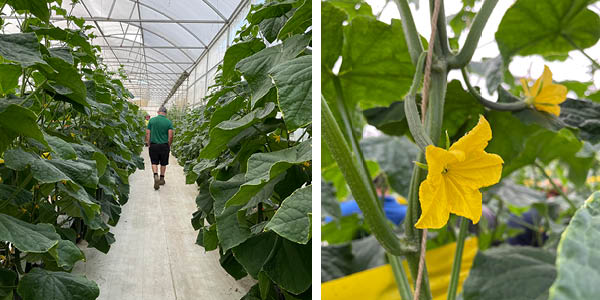
Figure 2: Participants inspecting the cucumber crop in one of the many greenhouses.
Key takeaways
Key to water and nutrient use efficiency is soil health. Some of the key things for growers to consider include:
- Good root systems are required for good water and nutrient use efficiency
- Soil texture and structure affect the volume of plant available water – and air – needed for soil life and root growth
- Build organic matter to feed soil life and plants through growing cover crops, adding compost, reducing bare soil, and reducing tillage. This improves water filtration, water and nutrient holding capacity, and soil air volume
- Avoid soil health decline through loss of organic matter (tillage, fallow and removal of crop/cover crop residue); low levels or poor diversity of soil life (lack of suitable food sources); and soil structure decline (compaction from machinery and erosion from wind or water)
- Undertake soil and plant tests and assessments regularly and monitor soil moisture to better manage irrigation and nutrition programs.
This can be more difficult on sandy (light textured) soils of the Swan Coastal Plain WA, compared to loam or clay (heavier) soils. Salinity and sodicity also bring further challenges for growers to manage.
For more information you can also access the following fact sheets:

